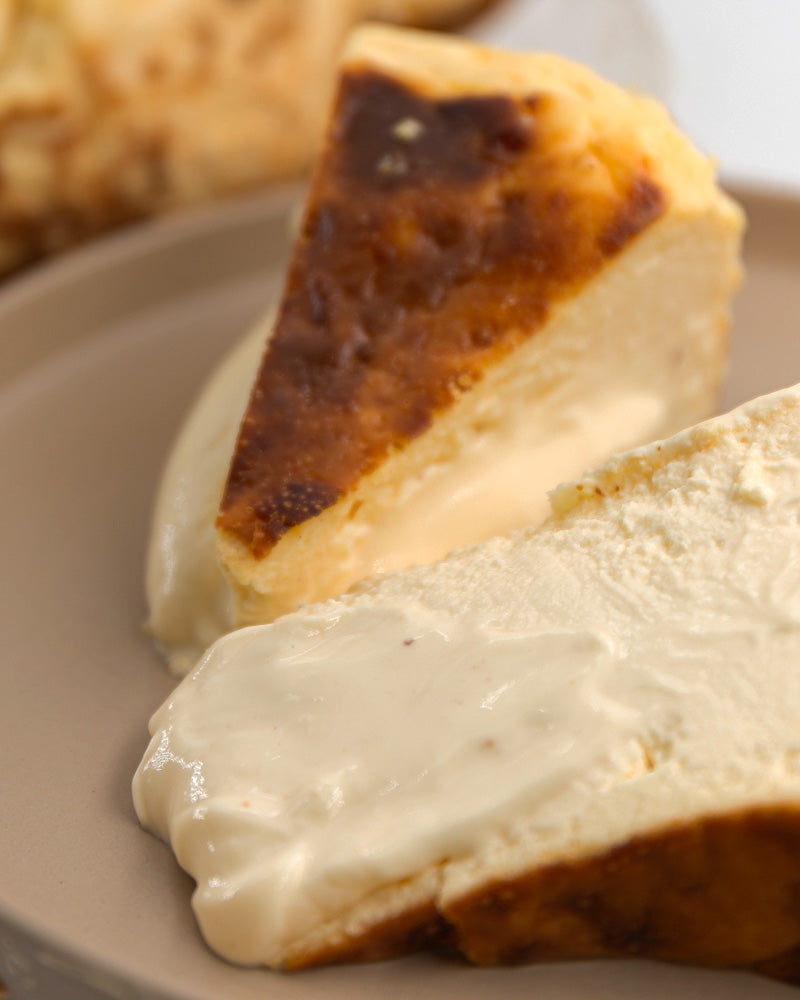
Trial and error.
This is how Maritta was born and how she won second prize for Best Cheesecake in Madrid 2025.
There are endless possibilities, shapes, and textures of cheesecakes. But if you want to give it that creamy touch, it's key to understand the role of each main ingredient.
The role of each ingredient in a cheesecake
Cream
-
It brings lightness to the mix.
-
It makes it less dense.
-
Softens the acidity of cream cheese.
Sugar
Beyond the obvious (sweetness), it has other functions:
-
Provides balance of flavor.
-
It helps to better integrate the ingredients (smoother texture).
-
Favor the golden exterior, if you are not looking for a completely white cake.
Egg
They are the ones that “tie” the mixture:
-
They help it set well in the oven, without the need for gelatin or thickeners.
-
They add softness and consistency. If you bake them overcooked, they'll give them a more sponge-like touch.
-
They add a touch of color and a mild, but important, flavor.
Cheese
-
It provides that creamy and dense texture.
-
It is the main flavor: smooth, slightly acidic and very neutral, ideal for combining with other flavors (like matcha, for example).
-
It also gives structure when curdling in the oven, without becoming hard.
How to find your perfect cheesecake recipe?
Once the main ingredients are clear, it's time to ask yourself several questions:
-
Do I want it creamier or firmer?
-
Should I use a mild cheese or combine it with a stronger one?
-
With or without a biscuit base?
In Maritta 's case, it has just the right amount of creaminess, it doesn't have a biscuit base (I'll explain why in another post) and the cheese we use for the classic is a soft, high-quality cream cheese from Spain.
Cream cheese: a world apart
Although it sounds exaggerated, cream cheese is another world .
There are many varieties and nuances that completely change the flavor of the cake.
You can play around with mixing different cheeses to suit your tastes. For example:
-
In Spain, it is most common to use only cream cheese .
-
In Italy, a lot is made with mascarpone .
-
In Greece, with feta .
Proportions: the key to balance
Now that you know what each ingredient contributes, all that's left is to adjust the quantities according to what you're looking for:
-
Want it fluffier? Add the egg.
-
More cheese flavor? Combine different types.
-
More or less sweet? Adjust the sugar.
Practical advice: how to beat and bake well
When whisking , you can accidentally whip the cream, introducing air into the mixture. This will make it more sponge-like when baked.
If the batter is too runny, it will probably be too creamy and need a little more baking time.
And be careful with the type of oven you use . In my personal experience, I haven't gotten the same (or even similar) results making the exact same recipe at the bakery or at home.
A gas oven like Maritta's releases a lot of air and heats more intensely, browning the cake more, even using the same temperature as a domestic oven.
The secret is in trying
Making a cheesecake is like cooking any dish:
-
If you use too high a temperature and too little time, it will burn on the outside and remain raw on the inside.
-
If you cook it at a low temperature and for too long, it may end up overcooked on the inside and pale on the outside.
The trick is to try, try, and try until you find your perfect balance.
Conclusion
So if you're looking for the perfect cheesecake recipe , I can only tell you one thing:
Test. Adjust. Repeat.
And enjoy the process until you find the point you like the most :)

